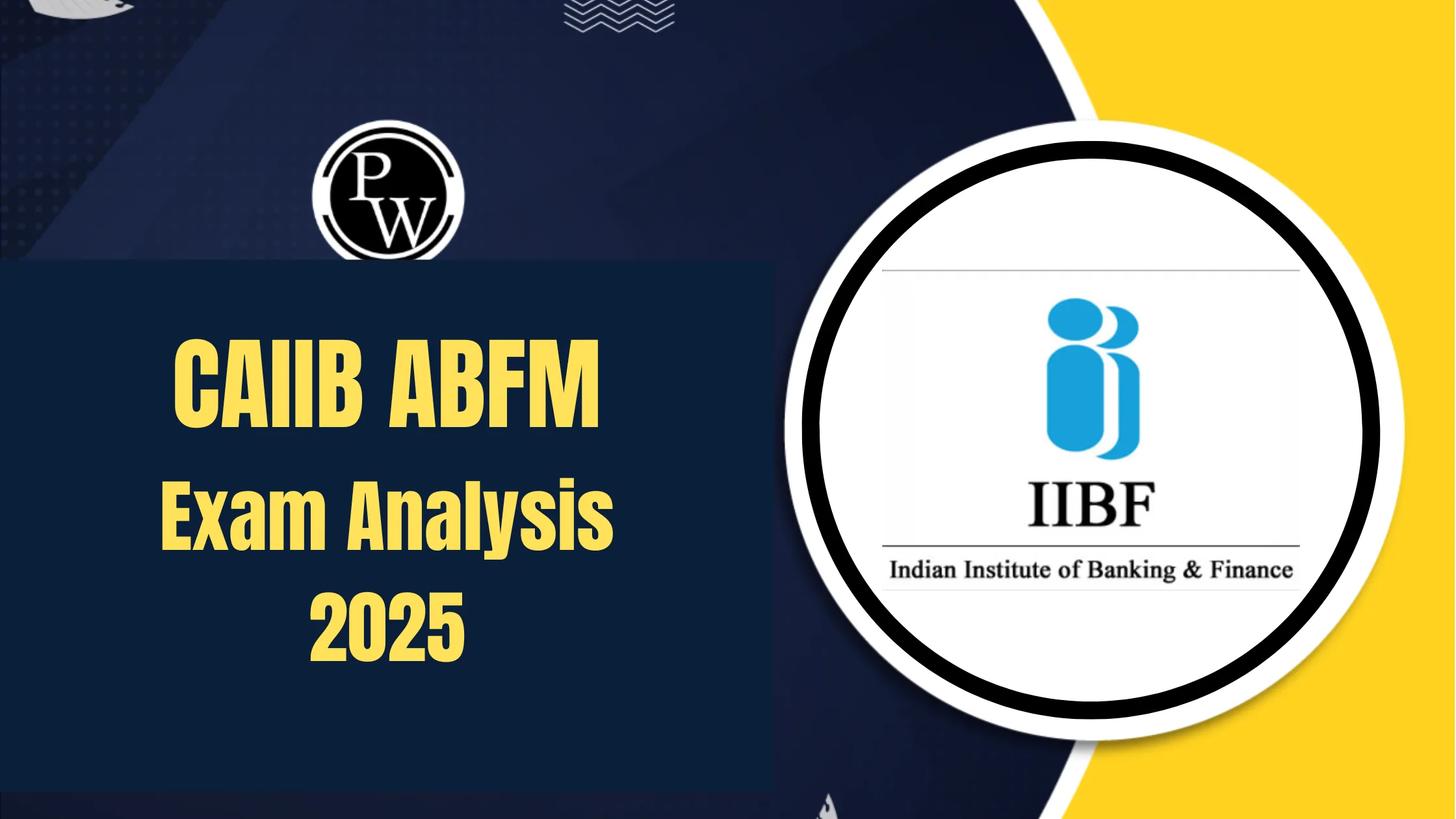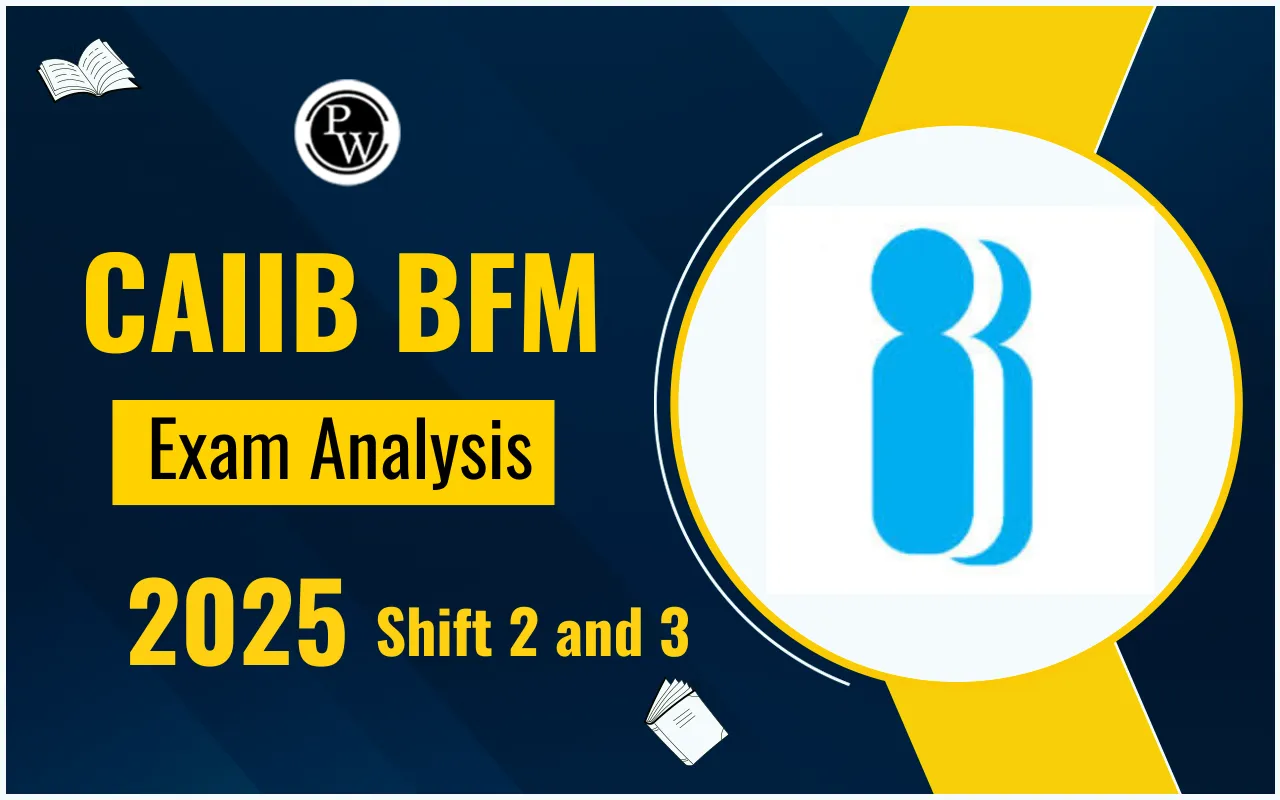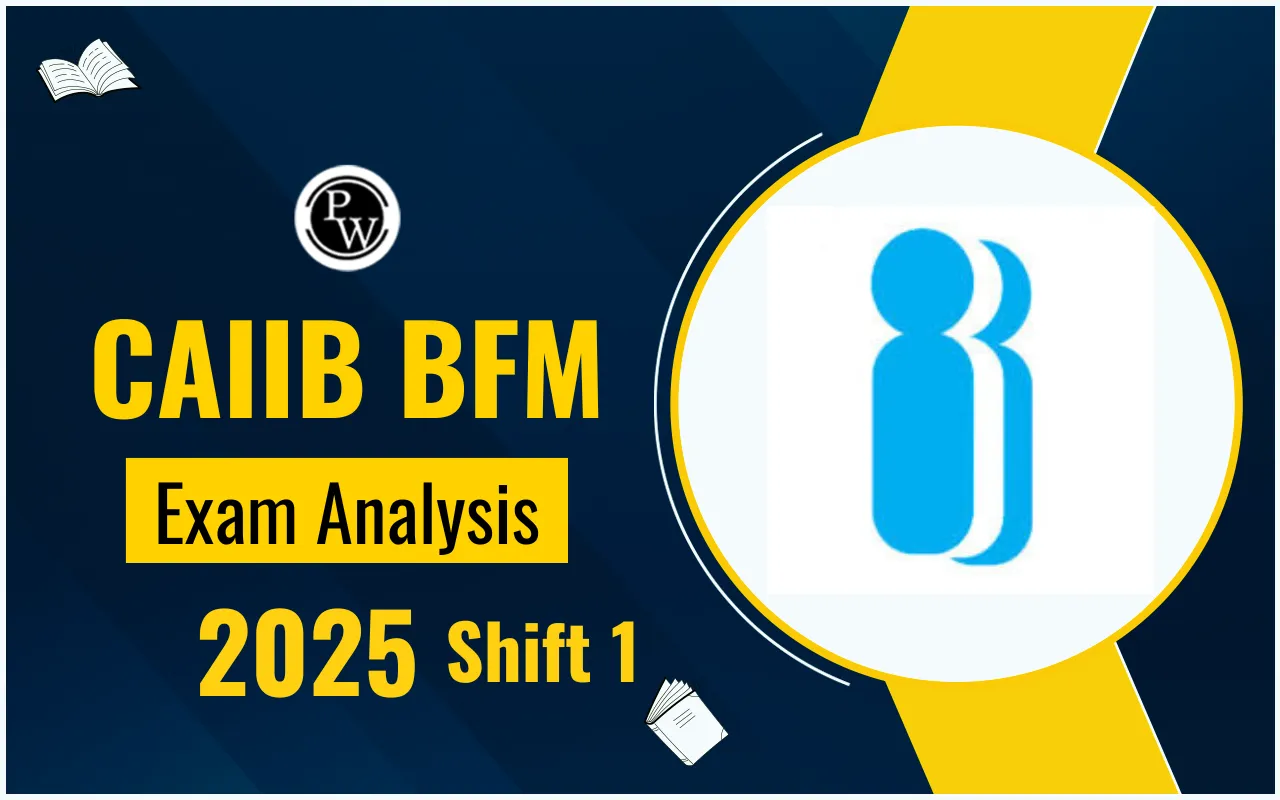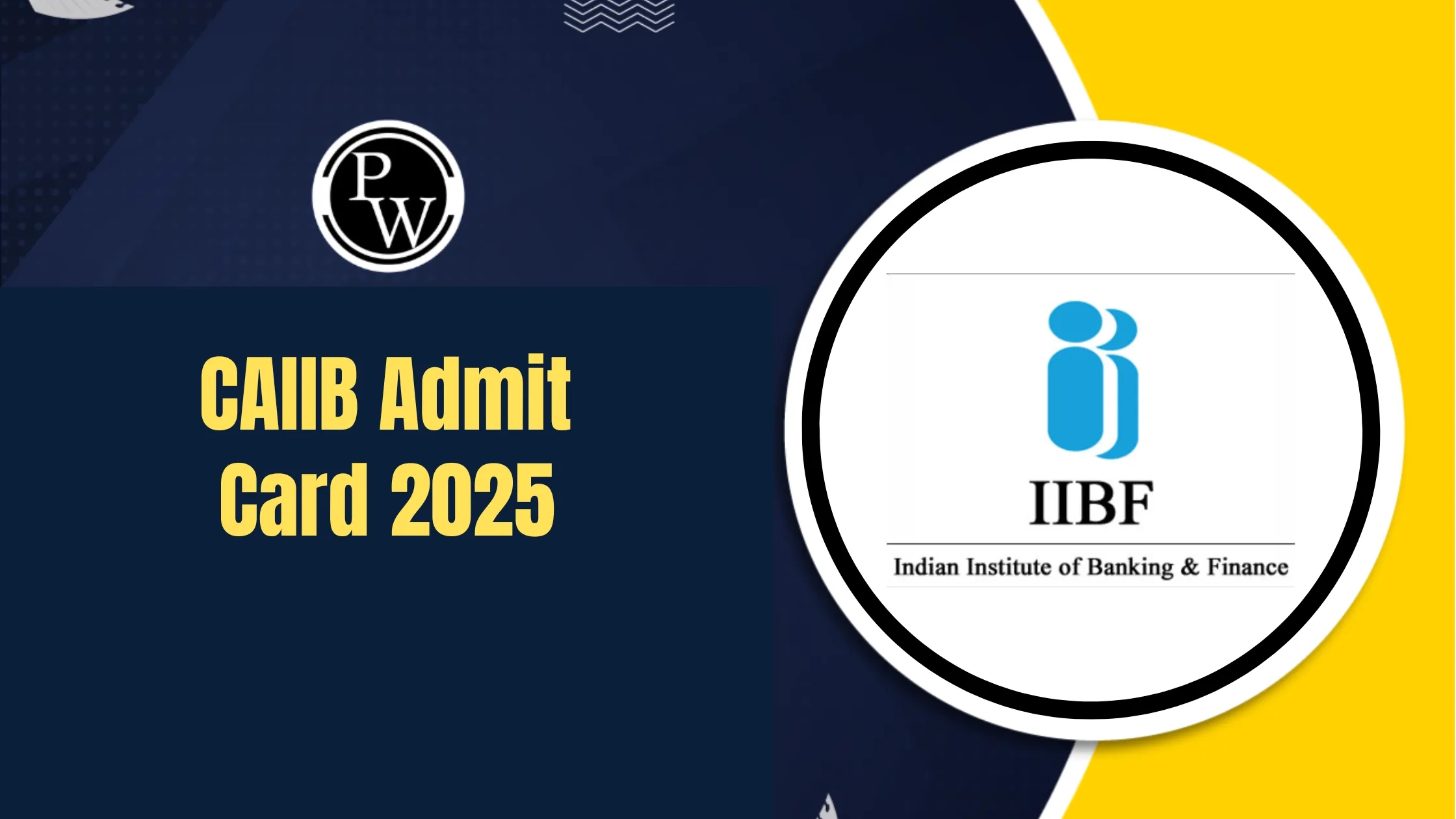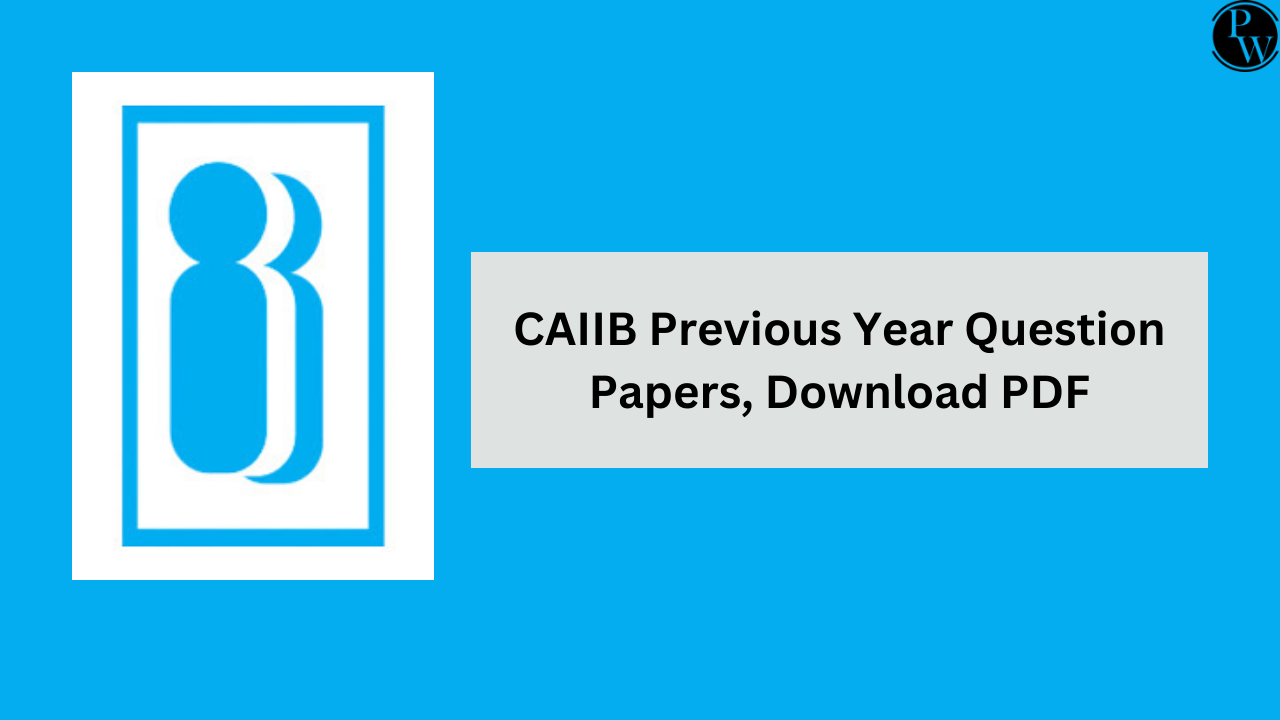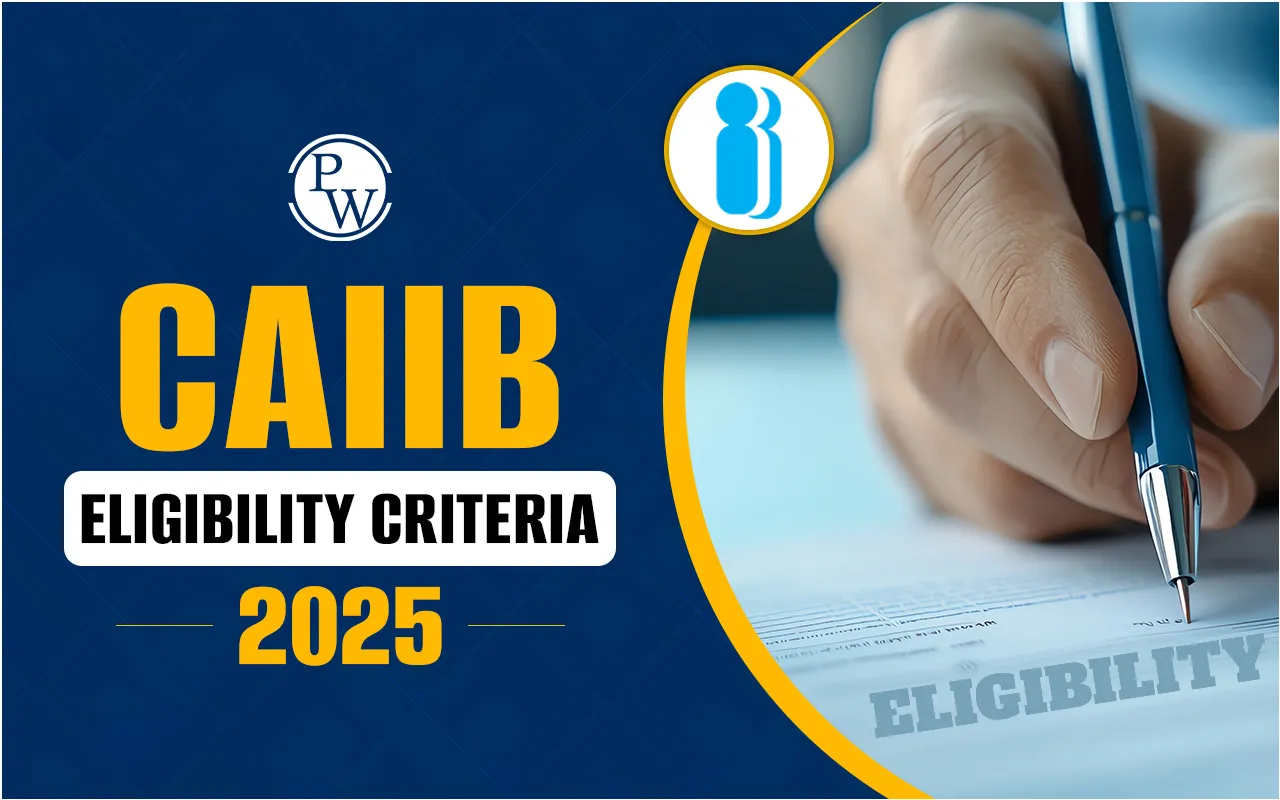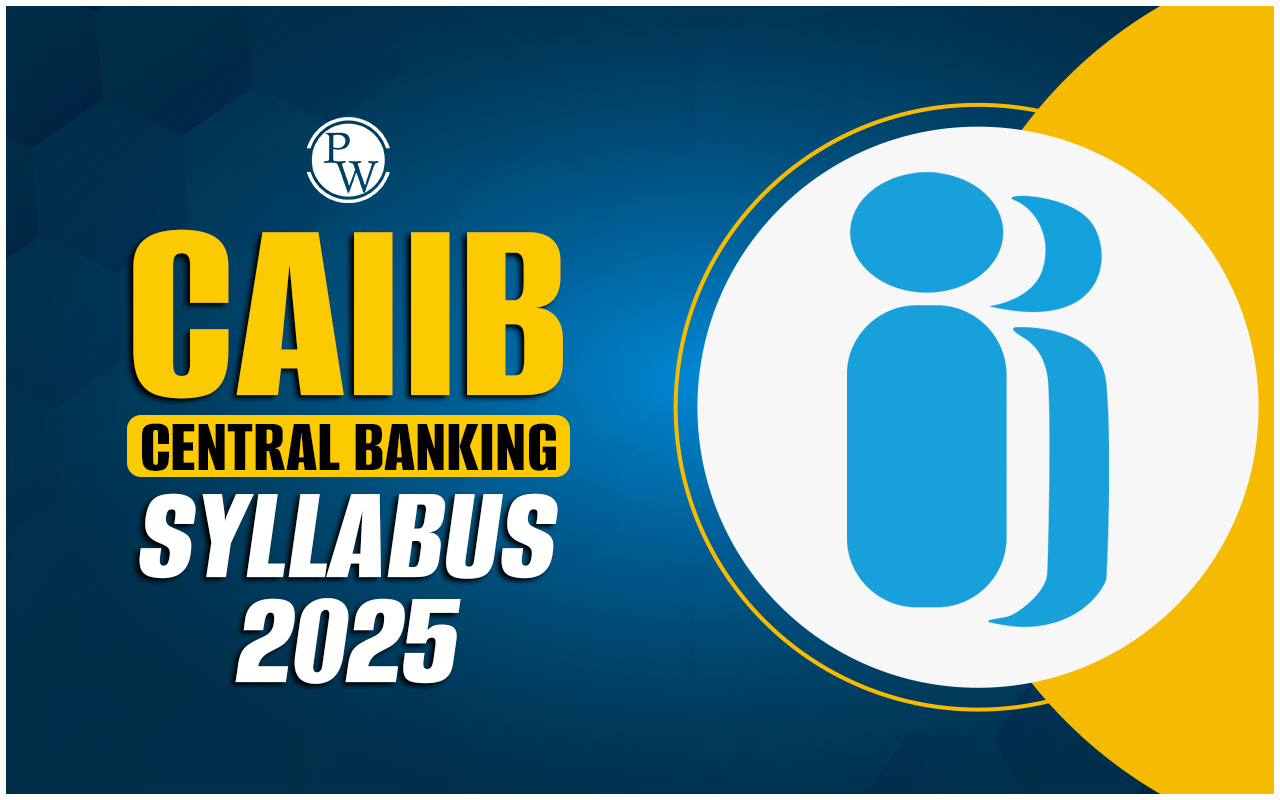
CAIIB Central Banking Syllabus 2025: The Indian Institute of Banking and Finance (IIBF) has defined the CAIIB Elective Paper Syllabus for the Certified Associate of the Indian Institute of Bankers (CAIIB) Examination. The CAIIB Syllabus has been recently updated to make the course more relevant and to emphasize a deeper understanding of concepts. There are 5 options to be chosen for the CAIIB Elective Paper these are Rural Banking, Human Resources Management, Information Technology, Risk Management and Central Banking. In this blog, we are going to discuss the detailed CAIIB Central Banking Syllabus 2025.
CAIIB Central Banking Syllabus 2025
Candidates might select an elective related to their present field of employment or their desired field of employment in the future. It is advised that applicants select an elective related to their present field of employment and then switch to another elective as this will allow for the development of the necessary abilities to manage various banking sectors. Candidates who are preparing for the CAIIB Central Banking Examination should focus on preparing to answer queries about the most recent developments in the various subjects of the examination, even if those topics were not specifically addressed in the exam. To kick-start your preparation strategically let us have a look at the CAIIB Central Banking Syllabus 2025 & Exam Pattern. Also Check, CAIIB Rural Banking Syllabus 2024CAIIB Central Banking Syllabus
MODULE A: RATIONALE AND FUNCTIONS OF CENTRAL BANK
Theory and Practice of Central Banking: Evolution Global Evolution of Central Banks; Reasons for Proliferation of Central Banks; Conflicting Role and Responsibilities of Central Banks; Development of Central Banks in Developed and Developing CountriesFunctions of Central Banks
Banker to Government; Banker to Banks; Lender-of-Last-Resort; Monetary Policy Functions; Currency Issue and Management; Payment and Settlement Systems; Maintaining Internal Value of Money; Maintenance of the External Value of Currency; Regulation, Facilitation and Supervision of Financial System; Financial Stability; Promotional Functions to Support Growth and Other National Objectives; Development of Financial Markets and Institutions; Central Bank Communication Policies.Contemporary Issues in Central Banking
Autonomy and Independence of a Central Bank; Credibility of a Central Bank; Accountability of a Central Bank; Transparency in Central Bank Operations; Conflict with Fiscal PoliciesMODULE B: CENTRAL BANKING IN INDIA
Reserve Bank of India Reserve Bank of India: Organizational Evolution; Reserve Bank of India: Structure and Governance; Reserve Bank of India: Major Organizational and Functional Developments Over Time; RBI Act 1934: SalientFeatures and Some Comments
Central Banking: Indian Specific Issues Banking Regulation Act; Foreign Exchange Management Act (FEMA); The Banking Ombudsman Scheme, 2006; Financial Sector Reforms; Other Financial Regulators and Division of Functions; Institutions Set up by RBIFinancial Inclusion and Development
Impediments in the process of achieving financial inclusion; Role of policy interventions: Mandates and Subventions; On building an appropriate institutional and financial structure based on digital technology; Focus on payment and settlement systems vs Focus on extension of credit; Some Issues and their possible resolution; Financial Inclusion; Financial Inclusion PlansMODULE C: MONETARY AND CREDIT POLICIES
Monetary Policy
Monetary Policy: Theoretical Underpinnings; Objectives of Monetary Policy; Reconciling Dual Objectives; Monetary Policy Rules; The Vexed Issue: Rules vs Discretion; Indicators of Policy; Instruments of Policy; Statutory Liquidity Ratio (SLR); Selective Credit Controls; Policy Transmissions Mechanisms and Channels; Transmission Channels; An Evaluation of the Transmission Channels; Transparency of Policies; Lags in Policy; Process of Monetary Policy Formulation in India; Conduct of Monetary Policy in the Wake of Net Large Capital Inflows during the 2000s; Recent Initiatives for Further Strengthening Monetary Policy Formulation.Credit Policy
Theoretical Underpinnings; Credit Policy in Practice; Nominal versus Real Credit; Credit Allocation Mechanisms; Instruments of Credit Control; Margin Requirements; Rationing of Credit (Credit Ceiling); Credit Pricing (Setting Bank’s Lending Rates)Fiscal-Monetary Relations
Monetary-Fiscal Relations: India; Striking Balance between Inflation and Growth: Recent Initiatives; Finances of Central and State Governments: Recent Trends; Central Government Finances in 2020-21; Central Government Finances in 2021-22; State Finances in 2021-22; Constitution of Finance Commission; Recommendations of the Fifteenth Finance Commission; Grants-In-Aid; Fiscal Roadmap/Rules; Fiscal Road Map Recommended by the 15th Finance CommissionLiquidity Management in the System
Theoretical Framework underlying LAF; Genesis and Evolution of Liquidity Adjustment Facility; Review of LAF based on the Report of the Expert Committee to Revise and Strengthen Monetary Policy Framework; Revised Framework of LAF based on the recommendations of IWG; Operational Strategies in Managing LAF; Underlying Instruments for the conduct of LAF; Guiding Principles for the conduct of LAF; Structuring of Open Market Operations ; Other salient features of the Revised LAF; Liquidity Management during Covid-19: Initiatives undertaken by Reserve Bank of India; Money Markets: Liquidity conditions; Government Securities Market and the Risk-Free Curve; Corporate Bond Market: Liquidity Conditions; Equity Markets: Liquidity Conditions; Severity of the Pandemic and the RBI initiatives; Recent measures announced by RBI on 08 April, 2022 as part of Monetary PolicyMODULE D: MANAGEMENT OF FOREIGN EXCHANGE RESERVES AND CONSTITUENTS OF INDIAN FINANCIAL MARKET
Management of Foreign Exchange Reserves
Legal Framework; Risk Management; Operational Risk and Control System; Transparency and Disclosures; Recent Developments in the Movement of Foreign Exchange Reserves; Sources of Accretion to Foreign Exchange Reserves; Adequacy of Reserves; Management of Gold Reserves; Investment Pattern of the Foreign Currency Assets (FCA); Other Related Aspects.Constituents of Indian Financial System Structure
Genesis of Financial Market Development; Structure and Growth of Financial Markets in India; Money Market; Government Securities Market; Foreign Exchange Market; Reform/Post-Reform Period (1990s to 2010); Foreign Exchange Markets: Post Reform Period; Financial Benchmarks – Transparency & Governance Framework; Roadmap for LIBOR TransitionMODULE E: REGULATION, SUPERVISION AND FINANCIAL STABILITY
Evolution of Regulation and Supervision
Genesis and Evolution of Regulation and Supervision: Some Theoretical Underpinnings; Global Backdrop; Interactions of Monetary Policy and Regulatory and Supervisory Policies; Integration Vs Separation of Monetary, Regulatory and Supervisory Functions - Recent Perspectives; Genesis of Bank Regulation and Supervision in India; Conduct of Monetary Policy and Compatibility with Regulatory and Supervisory Role: The Indian PerspectiveDevelopment, Regulation and Supervision and Recent Performance of Scheduled Commercial Banks
Evolution and Development of Commercial Banks Initial Years (1950 to 1969); Strengthening and Consolidation of Commercial Banks (1969-1991); Rapid Strides in the Development the Banking Sector following the Financial Reforms Process Ushered in the 1990’s; Prudential Requirements for bank supervision; Submission of Returns on Liquidity Risk, Interest Rate Risk, and Currency Risk; Risk Management in Banks; Regulatory Policies for Scheduled Commercial Banks; Supervision of Scheduled Commercial Banks; Recent Operations and Performance of Scheduled Commercial Banks; Developments in the Banking Sector 2021 in BriefDevelopment, Regulation and Supervision of Co-Operative Banks;
Growth of Cooperative Banking System; Regulatory Framework for Co-operatives: Duality of Control; Strengthening of the Financial Position of the UCBs; Strengthening of the Supervisory System Related to UCBs; Cooperative Banks: Recent Developments; Implementation Status of Goals; Strengthening Regulatory Framework; Major Developments;Financial Stability
Global Economic Crisis and its implications for Central Banks, Financial Stability: An Overview, Risks to Financial Stability, Early Warning Signals and Remedial action, Liquidity Management in Banks, The Basel Norms for Bank supervision, Progress in the implementation of Basel II Norms, Progress in the implementation of Basel III Norms, RBI Perspective on moving towards Basel III Implementation, Effect of Liberalization and Globalization on Financial Stability, Conduct of monetary policy in the context of Liberalisation and Globalization, Growing trend towards transparency, co-operation and best practices in a globalized environment, Role of consultative approach, Linkage to International Financial Stability, International Standards and Codes, Role of Supervisor under Basel II and Basel IIIMODULE F: NON-BANKING FINANCIAL COMPANIES AND PRIMARY DEALERS
Non-Banking Financial Institutions: Development, Regulation and Supervision
Conditions for Companies to Register as NBFCs with the Reserve Bank of India; NBFCs Registered with Other Regulatory Bodies; Classification of NBFCs under Broad Categories; Growth of NBFC Sector and the Need for Prudence; The Role of the Reserve Bank of India in the Development of NBFCs; Regulatory Policies for NBFCs: Scale-Based Regulatory Framework; Special Liquidity Scheme (SLS) for Non-Bank Financial Companies (NBFCs) / Housing Finance Companies (HFCs); Aligning Regulatory Framework for HFCs with NBFCs; Lowering of Secured Debt Limit for NBFCs under SARFAESI Act; Declaration of Dividend by NBFCs; Supervisory Policies for NBFCs; Appointment of Auditors in Regulated Entities; Prompt Corrective Action (PCA) Framework for NBFCs; Impact of Pandemic on NBFC Sector.Role of Primary Dealers in the Government Securities Market:
Development, Regulation and Supervision Evolution of PDs; Eligibility Conditions for PDs; Role and Responsibilities of PDs; Liquidity Support from RBI; Operations and Performance of PDs; Financial Performance of SPDs; Operational Guidelines, Regulatory and Supervisory Provisions Governing Primary Dealers; Investment Guidelines; Capital Adequacy and Risk Management.CAIIB Central Banking Exam Pattern 2025
- CAIIB Central Banking Exam Pattern 2025 will contain 100 objective type multiple choice questions for 100 marks including questions based on case studies. The Institute may however vary the number of questions to be asked for a subject.
- There may be some numerical questions in some of the CAIIB Elective subjects where no options will be provided. These questions will not be in the MCQ pattern and the answer has to be keyed in by the candidate.
- The examination will be held in Online Mode only
- There will be no negative marking for wrong answers.
- Examination will be conducted under online mode only on a Sunday. Questions for the examination will be asked for: i. Knowledge testing ii. Conceptual grasp iii. Analytical/ logical exposition iv. Problem solving v. Case analysis
CAIIB Central Banking Syllabus 2025 FAQs
Q1. Where can I get the CAIIB Central Banking Syllabus 2025?
Q2. How can I benefit from CAIIB certification?
Q3. What it the CAIIB Central Banking Exam Pattern 2025?
Q4. What is the objective of CAIIB Elective Paper?




